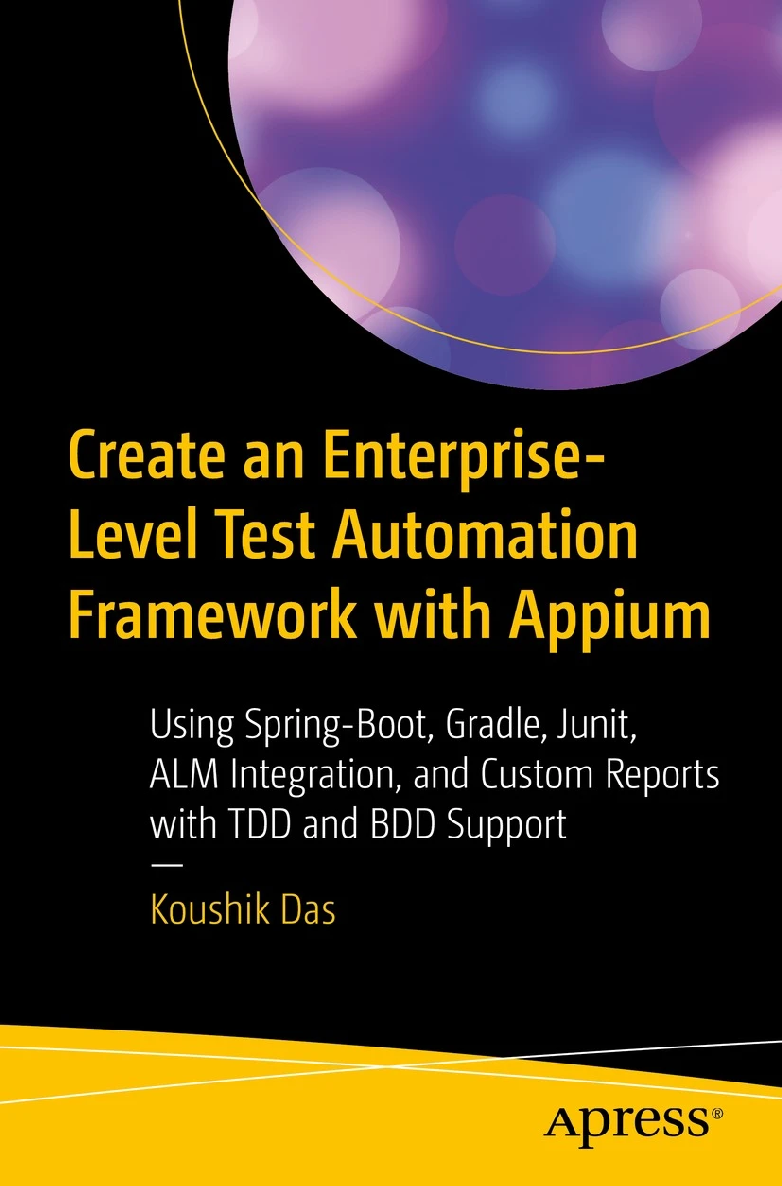 Create an Enterprise-Level Test AutomationFramework withAppiumUsing Spring-Boot, Gradle,Junit, ALM Integration,and Custom Reports with TDDand BDD SupportKoushik DasCreate an Enterprise-Level Test Automation Framework with Appium:Using Spring-Boot, Gradle, Junit, ALM Integration, and Custom Reportswith TDD and BDD Support Koushik Das Miami, FL, USA ISBN-13 (pbk): 978-1-4842-8196-3 ISBN-13 (electronic): 978-1-4842-8197-0 https://doi.org/10.1007/978-1-4842-8197-0 Copyright 2022 by Koushik Das This work is subject to copyright. All rights are reserved by the publisher, whether the whole or part of the material is concerned, specifically the rights of translation, reprinting, reuse of illustrations, recitation, broadcasting, reproduction on microfilms or in any other physical way, and transmission or information storage and retrieval, electronic adaptation, computer software, or by similar or dissimilar methodology now known or hereafter developed. Trademarked names, logos, and images may appear in this book. Rather than use a trademark symbol with every occurrence of a trademarked name, logo, or image we use the names, logos, and images only in an editorial fashion and to the benefit of the trademark owner, with no intention of infringement of the trademark. The use in this publication of trade names, trademarks, service marks, and similar terms, even if they are not identified as such, is not to be taken as an expression of opinion as to whether or not they are subject to proprietary rights. While the advice and information in this book are believed to be true and accurate at the date of publication, neither the authors nor the editors nor the publisher can accept any legal responsibility for any errors or omissions that may be made.
Create an Enterprise-Level Test AutomationFramework withAppiumUsing Spring-Boot, Gradle,Junit, ALM Integration,and Custom Reports with TDDand BDD SupportKoushik DasCreate an Enterprise-Level Test Automation Framework with Appium:Using Spring-Boot, Gradle, Junit, ALM Integration, and Custom Reportswith TDD and BDD Support Koushik Das Miami, FL, USA ISBN-13 (pbk): 978-1-4842-8196-3 ISBN-13 (electronic): 978-1-4842-8197-0 https://doi.org/10.1007/978-1-4842-8197-0 Copyright 2022 by Koushik Das This work is subject to copyright. All rights are reserved by the publisher, whether the whole or part of the material is concerned, specifically the rights of translation, reprinting, reuse of illustrations, recitation, broadcasting, reproduction on microfilms or in any other physical way, and transmission or information storage and retrieval, electronic adaptation, computer software, or by similar or dissimilar methodology now known or hereafter developed. Trademarked names, logos, and images may appear in this book. Rather than use a trademark symbol with every occurrence of a trademarked name, logo, or image we use the names, logos, and images only in an editorial fashion and to the benefit of the trademark owner, with no intention of infringement of the trademark. The use in this publication of trade names, trademarks, service marks, and similar terms, even if they are not identified as such, is not to be taken as an expression of opinion as to whether or not they are subject to proprietary rights. While the advice and information in this book are believed to be true and accurate at the date of publication, neither the authors nor the editors nor the publisher can accept any legal responsibility for any errors or omissions that may be made.
The publisher makes no warranty, express or implied, with respect to the material contained herein. Managing Director, Apress Media LLC: Welmoed Spahr Acquisitions Editor: Aaron Black Development Editor: James Markham Coordinating Editor: Jessica Vakili Copyeditor: April Rondeau Distributed to the book trade worldwide by Springer Science+Business Media New York, 233 Spring Street, 6th Floor, New York, NY 10013. Phone 1-800-SPRINGER, fax (201) 348-4505, email orders-ny@springer-sbm.com, or visit www.springeronline.com. Apress Media, LLC is a California LLC and the sole member (owner) is Springer Science+Business Media Finance Inc (SSBM Finance Inc). SSBM Finance Inc is a Delaware corporation. For information on translations, please e-mail booktranslations@springernature.com; for reprint, paperback, or audio rights, please e-mail bookpermissions@springernature.com.
Apress titles may be purchased in bulk for academic, corporate, or promotional use. eBook versions and licenses are also available for most titles. For more information, reference our Print and eBook Bulk Sales webpage at http://www.apress.com/bulk-sales. Any source code or other supplementary material referenced by the author in this book is available to readers on the GitHub repository: https://github.com/Apress/Create-an-Enterprise-Level-Test-Automation-Framework-with-Appium. For more detailed information, please visit http://www.apress.com/source-code. Printed on acid-free paper Table of Contents About the Author ix About the Technical Reviewer xi Introduction xiii Part I: Setting Up 1 Chapter 1: Automation Framework Overview3 Framework Technology Stack 4 Framework Key Features 7 Scripting Strategy 8 Automation Coding Standards 9 Use Functional Programming Over Imperative Approach 14 Summary14 Chapter 2: Creating the Wireframe with Spring-Boot 15 Bootstrapping with Spring-Boot15 Opening Your Project in IntelliJ 16 IntelliJ Plugins 18 Deciding on Your Folder Structure 19 Summary21 Chapter 3: Configuring Gradle 23 Preparing buildgradle 23 Preparing gradleproperties 30 iii Table of ConTenTs Creating Annotations for Gradle Tasks 31 Preparing settingsgradle 32 Summary33 Chapter 4: Creating the Properties Files 35 Creating Your Properties Files 35 Reading from Properties File with Spring-Boot Library 42 Reading from Properties Files in the Traditional Ways 44 Summary44 Chapter 5: Creating Android, iOS, and Web Drivers on Demand 45 Creating a Driver with Standard Desired Capabilities 45 Creating a Driver with Default Service 58 Creating Drivers for Grid or Cloud Execution 60 Quitting Driver and Teardown 60 Summary60 Chapter 6: Enhancing the Framework: Common Mobile Actions 61 Creating Variables for the MobileBaseActionScreen Class 61 Coding for Common Screen Actions95 Summary97 Part II: Building on the Framework 99 Chapter 7: Creating Page Objects 101 Initializing Page Objects and Workflow Class 101 Deciding on Locator Strategy 116 Writing Page Object Methods 117 Summary118 iv Table of ConTenTs Chapter 8: Writing Your First Test Suite 119 Using Various Annotations119 Writing Soft Assertions129 Plugging in the Reporting Module 129 Running Test Suite in Gradle 130 Summary132 Chapter 9: Importing Test Data from Excel, XML, or Other Formats 133 Importing Test Data from Excel 133 Importing Test Data from XML and Other Formats 144 Summary149 Chapter 10: Adding BDD Capabilities with Cucumber 151 Using a Spring Runner Class with Cucumber 151 Generating Extent Report in Runner Class 157 Writing Step Definitions 157 Running Test Suite in Gradle 158 Summary158 Chapter 11: Adding Allure and Enhanced Extent Reports 159 Generating Allure Report 159 Viewing Allure Report 161 Making Extent Report Work with Junit 161 Improving Extent Report to Print Data Tables 198 Creating Separate Extent Report for Each Test Suite 198 Summary204 v Table of ConTenTs Chapter 12: Creating a Pdf Report with Screenshots 205 Creating a PdfUtil Class to Generate Report for Each Test Suite 205 Passing Parameters to PdfUtil from a Test Suite211 Merging Multiple PDFs 220 Summary220 Chapter 13: Enhancing the Framework: Screenshots 221 Creating Screenshot and Saving in Default Location 221 Creating Screenshots and Saving in Various Locations 222 Creating Screenshot with Page Object Name 239 Summary246 Chapter 14: Testing Multiple Apps and Versions in Same Test Suite 247 Best Practice You Should Follow 247 Testing Multiple Versions of App in Same Test Suite 248 Testing Multiple Apps in Same Test Suite 250 Summary251 Chapter 15: Running Scripts or Batch Files from Test Suite253 Scenarios in Which Running a Script or Batch Files Is Required 253 Running Script or Batch Files from Test Suite 254 Summary261 Chapter 16: API Testing 263 Testing REST API with Web Client 263 Updating TestautomationApplicationTests 266 Summary268 vi Table of ConTenTs Part III: Advanced Topics 269 Chapter 17: Advanced Topic 1: Adding Device Management Functions 271 Overview 271 Unlocking the Device 307 Toggling the Wi-Fi 307 Setting the Language 307 Setting the Device Date, Time, Time Zone, and Time Format 308 Reading Device Properties 309 Enabling and Disabling App Notifications 310 Summary310 Chapter 18: Advanced Topic 2: Integrating with HP ALM 311 Using ALM 15x API 311 Login and Authentication 330 CRUD Operations in AboutAppTestSuite 330 CRUD Operations in TestautomationApplicationTests 333 Summary336 Chapter 19: Advanced Topic 3: Adding Localization Testing Capabilities 337 Deciding on Approach Based on Requirements 337 Localization Testing in Android339 Localization Testing in iOS 350 Summary355 vii Table of ConTenTs Chapter 20: Advanced Topic 4: Implementing Parallel Test Execution 357 Managing Multiple Sessions 357 Updating BaseTest Class 362 Updating Test Suites and Step Definitions 366 Summary374 Appendix A: Other Utilities 375 OCR Util 375 Image Comparison Util 376 Email Util 379 Appendix B: Automation Setup 391 Step 1: Install Open JDK and Configure JAVA_HOME 391 Step 2: Install Gradle and Configure GRADLE_HOME 391 Step 3: Install Git and Set Up git config 392 Step 4: Install Appium 392 Step 5: Install Carthage 392 Step 6: Install Xcode 392 Step 7: Install Android Studio 393 Step 8: Save System Variables in Bash Profile 393 Step 9: Install IntelliJ 393 Index 395 viii 
Next page
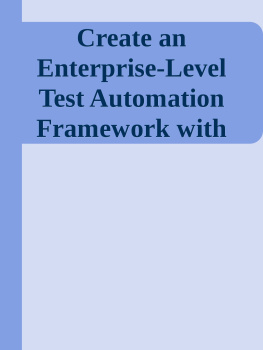
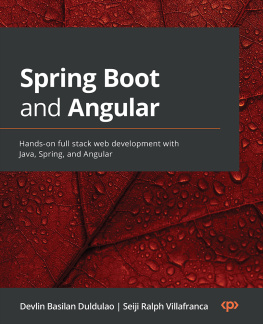

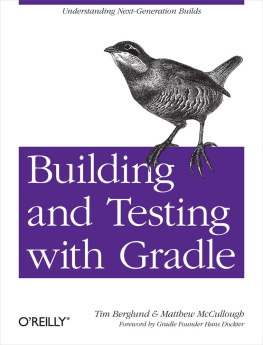
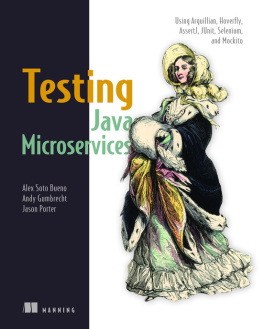
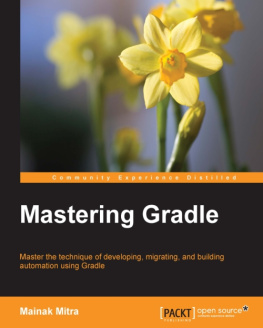

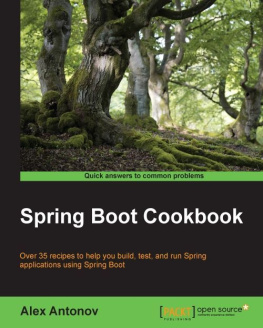
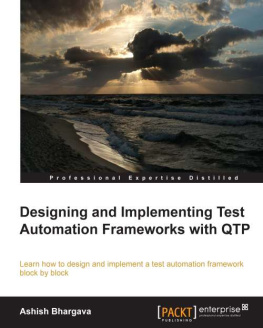
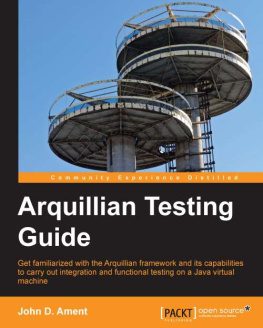
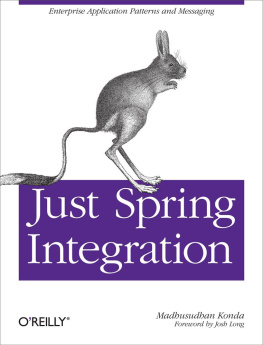
 Create an Enterprise-Level Test AutomationFramework withAppiumUsing Spring-Boot, Gradle,Junit, ALM Integration,and Custom Reports with TDDand BDD SupportKoushik DasCreate an Enterprise-Level Test Automation Framework with Appium:Using Spring-Boot, Gradle, Junit, ALM Integration, and Custom Reportswith TDD and BDD Support Koushik Das Miami, FL, USA ISBN-13 (pbk): 978-1-4842-8196-3 ISBN-13 (electronic): 978-1-4842-8197-0 https://doi.org/10.1007/978-1-4842-8197-0 Copyright 2022 by Koushik Das This work is subject to copyright. All rights are reserved by the publisher, whether the whole or part of the material is concerned, specifically the rights of translation, reprinting, reuse of illustrations, recitation, broadcasting, reproduction on microfilms or in any other physical way, and transmission or information storage and retrieval, electronic adaptation, computer software, or by similar or dissimilar methodology now known or hereafter developed. Trademarked names, logos, and images may appear in this book. Rather than use a trademark symbol with every occurrence of a trademarked name, logo, or image we use the names, logos, and images only in an editorial fashion and to the benefit of the trademark owner, with no intention of infringement of the trademark. The use in this publication of trade names, trademarks, service marks, and similar terms, even if they are not identified as such, is not to be taken as an expression of opinion as to whether or not they are subject to proprietary rights. While the advice and information in this book are believed to be true and accurate at the date of publication, neither the authors nor the editors nor the publisher can accept any legal responsibility for any errors or omissions that may be made.
Create an Enterprise-Level Test AutomationFramework withAppiumUsing Spring-Boot, Gradle,Junit, ALM Integration,and Custom Reports with TDDand BDD SupportKoushik DasCreate an Enterprise-Level Test Automation Framework with Appium:Using Spring-Boot, Gradle, Junit, ALM Integration, and Custom Reportswith TDD and BDD Support Koushik Das Miami, FL, USA ISBN-13 (pbk): 978-1-4842-8196-3 ISBN-13 (electronic): 978-1-4842-8197-0 https://doi.org/10.1007/978-1-4842-8197-0 Copyright 2022 by Koushik Das This work is subject to copyright. All rights are reserved by the publisher, whether the whole or part of the material is concerned, specifically the rights of translation, reprinting, reuse of illustrations, recitation, broadcasting, reproduction on microfilms or in any other physical way, and transmission or information storage and retrieval, electronic adaptation, computer software, or by similar or dissimilar methodology now known or hereafter developed. Trademarked names, logos, and images may appear in this book. Rather than use a trademark symbol with every occurrence of a trademarked name, logo, or image we use the names, logos, and images only in an editorial fashion and to the benefit of the trademark owner, with no intention of infringement of the trademark. The use in this publication of trade names, trademarks, service marks, and similar terms, even if they are not identified as such, is not to be taken as an expression of opinion as to whether or not they are subject to proprietary rights. While the advice and information in this book are believed to be true and accurate at the date of publication, neither the authors nor the editors nor the publisher can accept any legal responsibility for any errors or omissions that may be made.